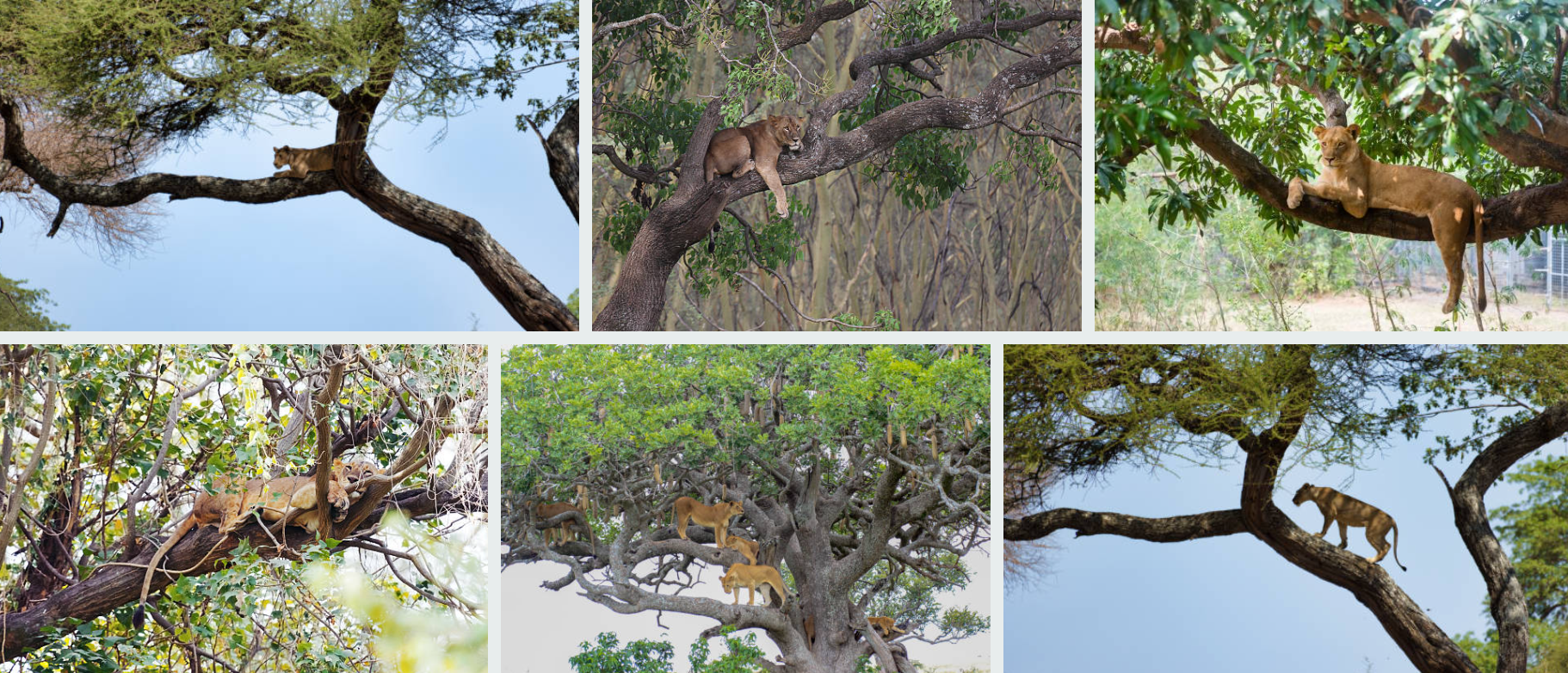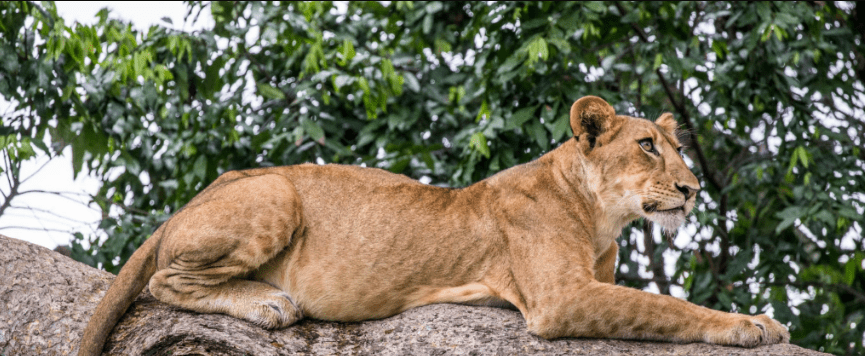How to Spot Tree-Climbing Lions in Uganda’s Ishasha
Uganda is a land of breathtaking wildlife, but one of its most extraordinary spectacles is the Spot Tree-Climbing Lions in the Ishasha sector of Queen Elizabeth National Park. Unlike their savanna-dwelling counterparts, these majestic predators have developed a rare behavior—lounging high up in the branches of fig and acacia trees. Witnessing these lions perched like oversized housecats is a surreal experience, one that draws wildlife enthusiasts from across the globe.
But spotting these elusive tree-climbing lions requires patience, timing, and a bit of luck. This guide will walk you through everything you need to know to increase your chances of encountering this incredible phenomenon while exploring Uganda’s wild beauty.
Why Do Lions Climb Trees in Ishasha?

Before diving into how to Spot Tree-Climbing Lions, it’s worth understanding why they exhibit this unusual behavior. While lions are not natural climbers, the lions of Ishasha have adapted to life in the trees for several reasons:
Escape from Ground Heat – The savanna floor can get scorching hot, and climbing trees allows lions to catch cool breezes.
Avoiding Insects – Staying elevated helps them dodge bothersome tsetse flies and other ground-dwelling pests.
Better Vantage Point – From the trees, lions can survey the landscape for prey or potential threats.
Unique Territorial Behavior – Some researchers believe this behavior is passed down through generations, making Ishasha’s lions distinct.
Unlike Tanzania’s Lake Manyara lions, which also climb trees, Ishasha’s lions are more consistent in their arboreal habits, offering visitors a higher chance of sighting them.
Best Time to Spot Tree-Climbing Lions
Timing is crucial when trying to Spot Tree-Climbing Lions. Here’s when your odds are highest:
1. Dry Season (June – September & December – February)
During the dry months, vegetation is sparse, making lions easier to spot. Additionally, the heat drives them into the trees for relief. Early mornings and late afternoons are prime viewing times.
2. Midday Resting Hours (11 AM – 3 PM)
Contrary to typical safari advice (which favors dawn and dusk for predators), Ishasha’s lions often climb trees during the hottest part of the day. This is when they seek shade and relaxation above ground.
3. Avoid the Rainy Season (March – May & October – November)
Heavy rains mean lions have less incentive to climb trees, as the ground is cooler and insects are less bothersome. Visibility is also reduced due to thick foliage.
Where Exactly to Look: Key Locations in Ishasha
The Ishasha sector is a remote, less-visited part of Queen Elizabeth National Park, but it’s the epicenter for Spot Tree-Climbing Lions. Focus on these hotspots:
1. The Fig Tree Circuit
This area is famous for its massive fig trees, which provide sturdy branches for lions to lounge on. Guides often patrol this route knowing lions favor these trees.
2. The Ishasha Riverbanks
Lions sometimes rest in trees near the river, where they can monitor prey coming to drink. Keep an eye on large acacia and sausage trees along the water’s edge.
3. Open Savannah Clearings
Wide, grassy plains with scattered trees are another prime location. Lions climb to get a better view of buffalo, antelope, and other potential meals.
Expert Tips to Increase Your Chances
1. Hire an Experienced Guide
Local guides know the lions’ favorite trees and recent movement patterns. Their expertise dramatically improves your chances of a sighting.
2. Be Patient and Stay Quiet
Lions are sensitive to noise. Turn off engines, speak softly, and wait—sometimes, they descend from trees if disturbed.
3. Use Binoculars and Zoom Lenses
Some lions rest high in the canopy, making them hard to see with the naked eye. A good pair of binoculars or a camera with a zoom lens is essential.
4. Look for Other Wildlife Clues
If you spot vultures circling or antelopes acting skittish, lions might be nearby—possibly in a tree.
5. Visit Multiple Days
Wildlife sightings are never guaranteed. Spending 2-3 days in Ishasha increases your odds significantly.
The Magic of Witnessing Tree-Climbing Lions
There’s something almost mystical about seeing a 200-kilogram lion draped over a tree branch, lazily observing the world below. It defies the usual image of lions as fierce ground hunters and instead showcases their adaptability and surprising agility.
For photographers, capturing this moment is a dream—golden fur against green leaves, a powerful predator in an unexpected pose. For nature lovers, it’s a reminder of how wildlife continually surprises us, adapting in ways we never imagined.
Conservation and Responsible Tourism
While the thrill of spotting these lions is undeniable, it’s crucial to practice responsible tourism:
Keep a Safe Distance – Never try to lure lions down or approach too closely.
Respect Park Rules – Stay on designated paths and follow your guide’s instructions.
Support Local Conservation – Tourism helps fund wildlife protection. Choose eco-friendly lodges and ethical tour operators.
The Spot Tree-Climbing Lions phenomenon is a fragile wonder. By visiting responsibly, you help ensure future generations can witness it too.
A Once-in-a-Lifetime Experience
Few wildlife encounters rival the awe of seeing lions lounging in trees. Ishasha’s tree-climbing lions are a testament to nature’s endless creativity, offering a rare and unforgettable safari experience.
With the right timing, location, and a little patience, you could be one of the lucky few to witness this extraordinary behavior. So pack your binoculars, book your safari, and venture into Uganda’s wild heart—where lions rule not just the land, but the trees as well.
Would you like recommendations on the best lodges or safari operators for your Ishasha adventure? Let me know—I’d be happy to help!

